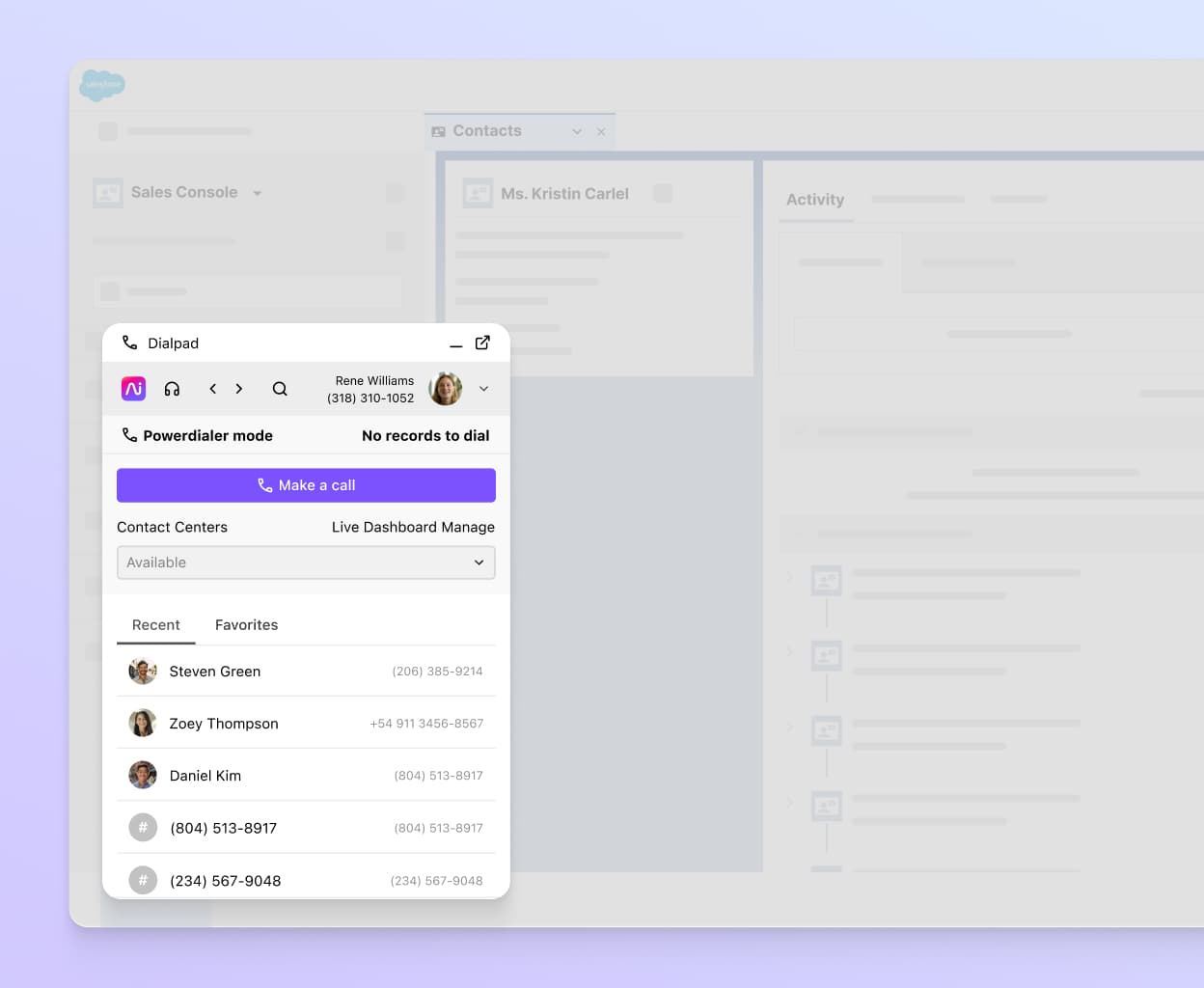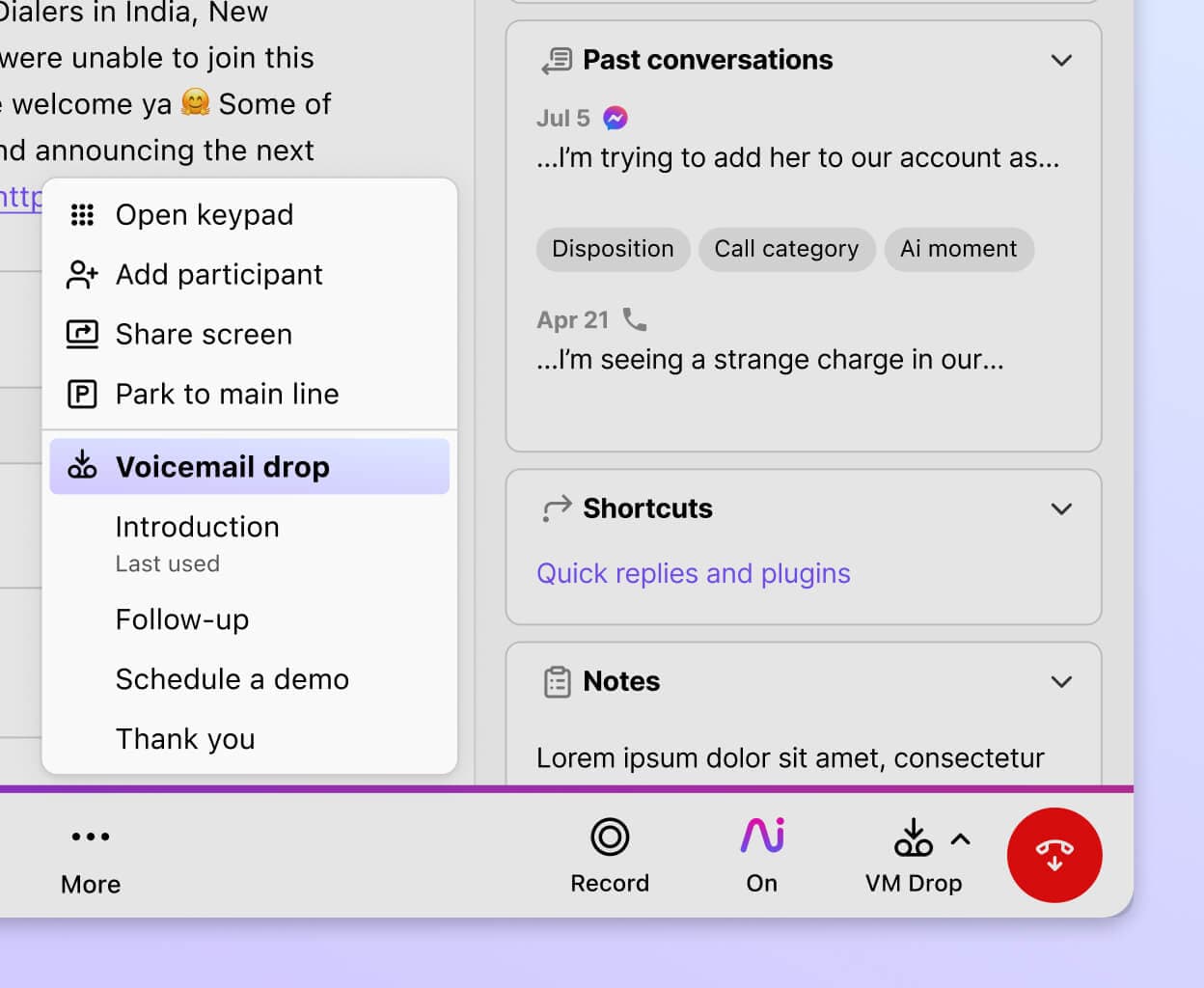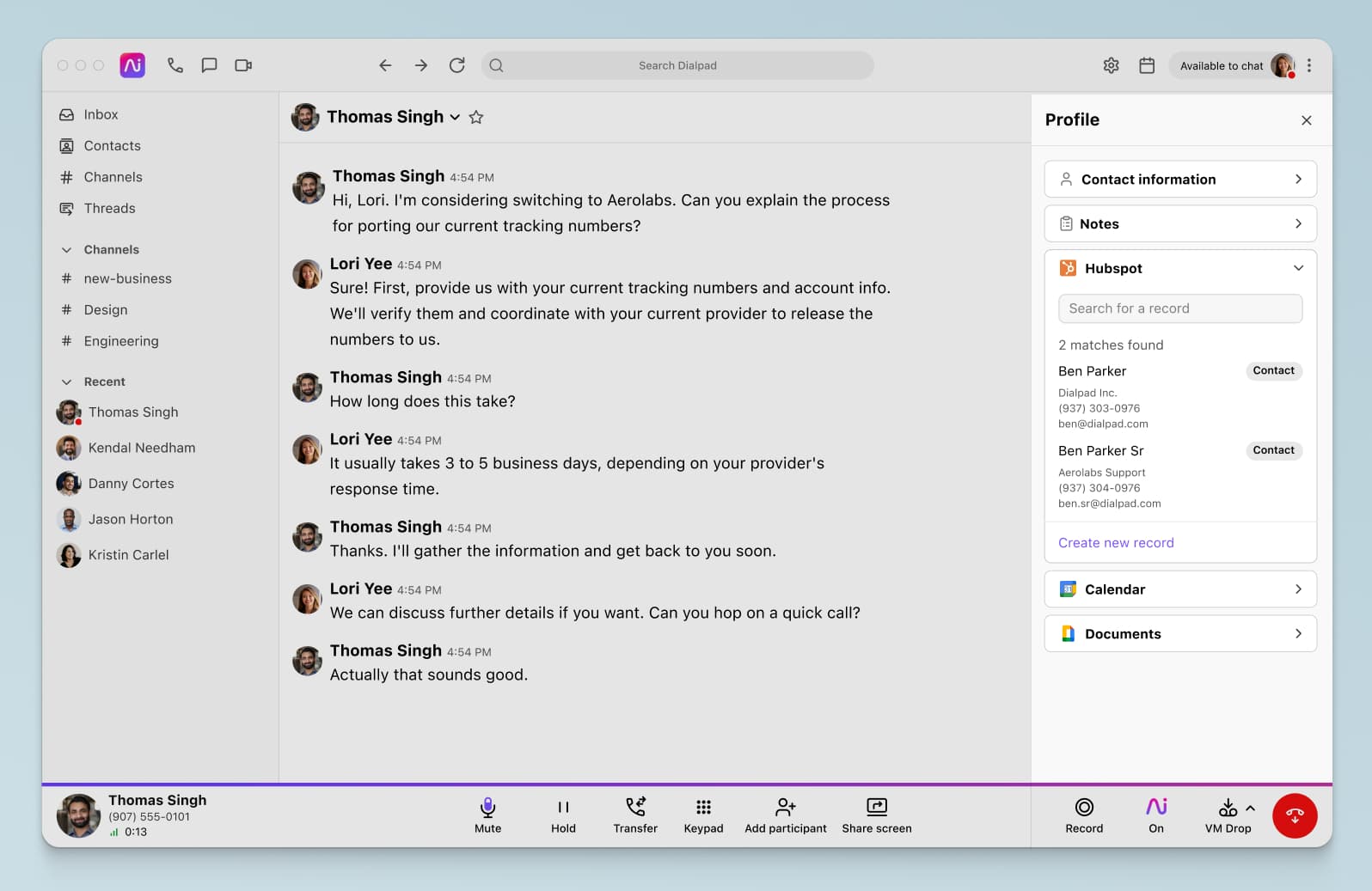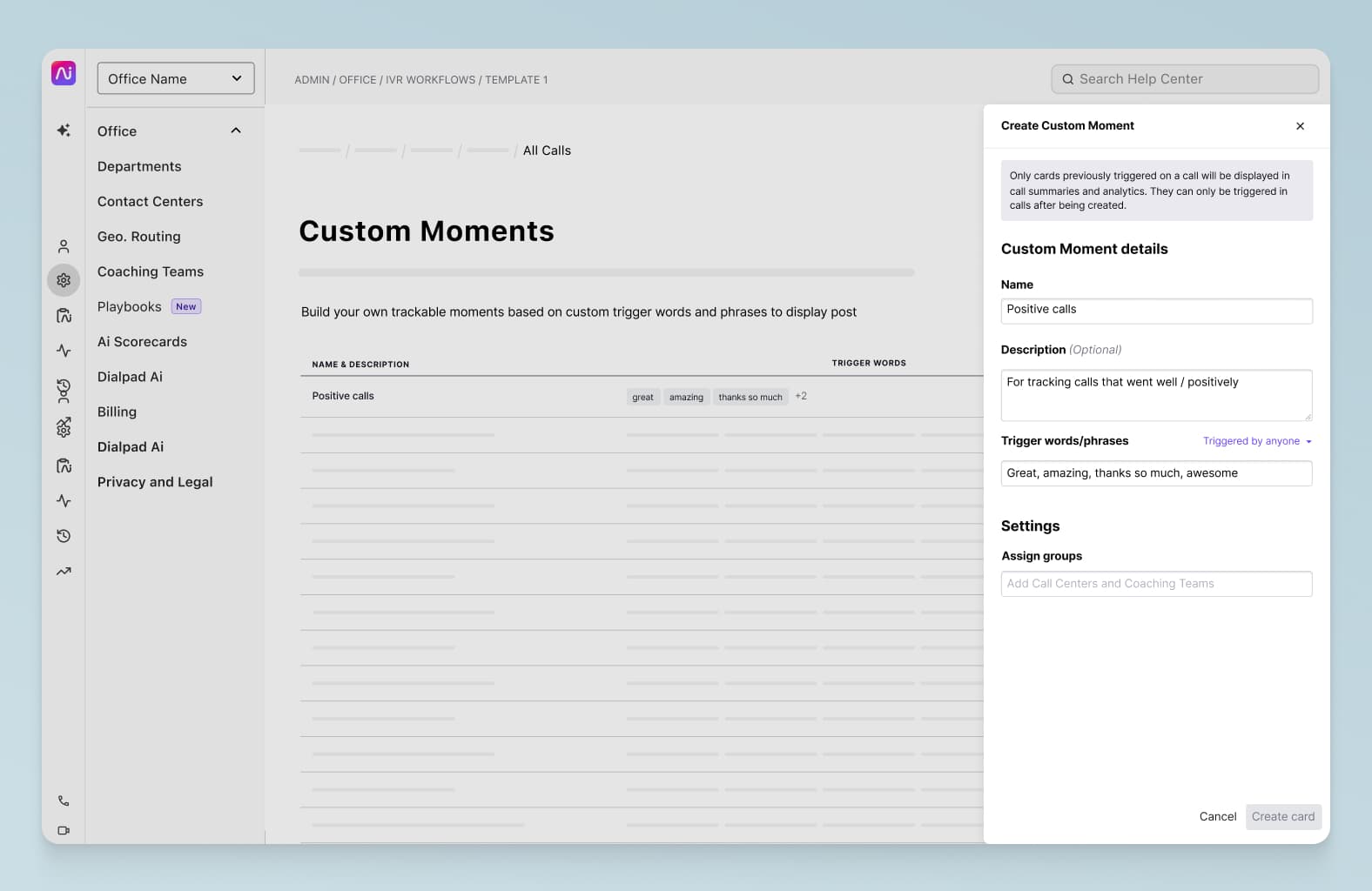Outbound sales: A guide from a top-performing SDR

Sales Development Representative

Tags
Share
Some companies can get away without having an outbound sales team—or any sales reps at all. But in certain industries (B2B sales, for instance), you often have to do cold outreach or outbound lead generation activities to support your advertising, SEO, and content marketing. Otherwise, you might be waiting a long time for prospects to come inbound and trickle in.
As one of the top-performing SDRs (Sales Development Reps) at Dialpad, I do everything from outreach, to follow-ups, to cold emails and passing along qualified leads to our AEs, every single day.
In this guide, I’ll walk you through some of the sales techniques I use, along with other tips to improve your outbound sales efforts.
What is outbound sales?
Outbound sales describes the part of a sales representative’s job that’s fully focused on doing outreach to bring in potential new customers.
Typically, this includes researching and finding cold leads’ contact information, doing sales prospecting, responding to inbound leads or referrals, and picking out quality leads who are a good fit to move to the next step of the sales cycle.
The goal of outbound selling is to generate new leads and bring in new business. In some industries, you might have “full-cycle” salespeople who handle the later stages of the sales funnel as well, but in my team, we have AEs (Account Executives) who’d own those stages and close deals. SDRs and AEs work as a team.
Outbound vs inbound sales: The main differences
The main difference between outbound and inbound sales is that outbound sales is proactive while inbound sales is reactive.
Outbound sales is the process of proactively reaching out to potential customers, usually through cold calls, emails, or social media messages. In contrast, inbound sales involves prospects coming to you, whether that’s through a “Contact Us” form on your website, attending your webinar, or calling your business directly.
Another key difference is that outbound sales is typically more expensive than inbound sales, since you have to hire a team of sales professionals to proactively reach out to potential customers. It’s very much a volume game—the more cold emails and cold calls you make, the more ideal customers in your target audience you can have conversations with, the more deals you can potentially close.
The basic outbound sales process
The basic outbound sales process contains a few key steps:
1. Prospecting
The first step in outbound sales is finding your decision makers or potential customers. This can be done through research into your target market, buying lead lists, or even social media. At this stage, you should have a clear idea of who your buyer personas are and a solid sales pitch for each persona. (What are their pain points? How can you solve their problem?)
Once you’ve got a set of quality leads, you can start reaching out to them.
2. Contacting
Now, it’s time to reach out and make contact with these potential customers. Depending on your company’s sales approach and the tools you have, this can be done through a variety of ways:
Phone calls — A classic. We use Dialpad, which has a great power dialer and Salesforce integration that are designed to help us make as many calls as efficiently as possible:

There’s also a voicemail drop feature, which lets us drop pre-recorded messages into a call as soon as we hit a prospect’s voicemail instead of having to recite the same message every time. A few minutes here and there may not seem like much, but when you’re making hundreds of dials a day, it really adds up:

If you’re calling prospects in different regions, you may also want a local presence dialing feature that lets you make calls from local area codes to increase the chances of prospects picking up.
Emails — Another big communication channel. There are many automations that can help speed this up, and you can use email templates too so that your sales reps don’t have to write messages from scratch. Dialpad has a nice integration with Outreach, an email automation tool that lets you design multi-touch campaigns and that also comes with built-in metrics like open rates:

Social selling — Again, this depends on your industry, but for us being in software, social networks like LinkedIn are a great way to get in touch with sales leads if they’re not picking up their phones.
3. Qualifying
The next step is to qualify the prospect by getting on a call and having a conversation with them. This is where you determine if the prospect is a good fit for your product or service.
To do this, you'll need to ask some questions and learn about their specific needs and pain points. Not all leads will be good customers—what you don’t want is to have a great conversion rate, but then have customers drop off or churn soon afterward. You want these customers to be a great fit for your business, and to stay with you long-term.
I add notes pretty diligently to our CRM—it’s important to log as many of these details as possible so that anyone on your team can pick up the threads of a conversation later if needed. Dialpad integrates with many different CRMs, like Salesforce, HubSpot, and Zoho CRM to automate logging call details and embed the dialer inside these CRMs. It saves us a ton of time:

And that’s pretty much it for our outbound sales process! After this, the leads get passed onto our AEs, who are our closers, to hopefully win the deal.
5 outbound sales tips for more booked meetings
1. Be prepared to handle objections
One of the most important things you can do when making outbound sales calls is to be prepared to handle objections. Prospects will almost always have objections, and you have to know beforehand what you’re going to say.
For us, the most common objections we hear are things like “it’s not the right time” or “I’m not the decision maker.” They’re not a hard no—objections rarely are. A skilled sales rep will be able to finesse their replies so that they can still get to the next step or a different influencer or decision maker when faced with an objection.
One neat thing about Dialpad is that it has AI-powered features designed to help us with this. For example, not only does it transcribe calls in real time, it can also track how frequently certain keywords or phrases (like a competitor name or an objection) come up on sales calls. Say we know that pricing questions come up often. We can create a “Custom Moment” to track how often this comes up (and dig into the transcripts and call recordings in Dialpad) if we notice any unusual trends:

And to go one step further, we can also create RTA (Real-Time Assist) cards with tailored notes on specific topics that pop up automatically on our screens when certain keywords are said on a call. To take that pricing example I just gave, we could create an RTA card with notes on how to talk about our pricing to prospects, and set that to pop up on sales reps’ screens whenever “price” or “cost” is said:

This way, sales managers don’t have to personally coach every call, but reps can still get the information they need to handle calls!
2. Know your pitch
One of the most important things you can do to prepare for your outbound sales calls is to create mock call scripts and practice, practice, practice. This will help you sound more natural on your calls, and you'll also be able to pivot more easily when prospects throw different questions at you (as opposed to trying to stick to a script too rigidly).
There are a few different ways you can go about creating your scripts. One method is to start with a general outline of what you want to cover on the call, and then fill in the blanks with specific details about the prospect. Another approach is to write out the entire script beforehand, including all the questions you want to ask and the points you want to cover.
Whichever method you choose, it's important to practice your script ahead of time so that you sound confident and prepared when you're on the call. You can practice by yourself, or you can have a friend or colleague play the role of the prospect. Either way, the more you practice, the better your chances of success.
3. Cold call every good opportunity
It's important to remember that not every outbound call is going to result in a meeting or a sale. This will help you not feel so discouraged when most prospects inevitably don’t respond.
Even if you aren't successful in booking a meeting or selling your product, you can still learn a lot from each call. Maybe you'll learn more about what objections prospects are giving you or what questions they're asking. This information can be valuable in tweaking your outbound strategy.
4. Do your homework
One of the best ways to stand out when you’re cold calling is to show that you’ve done your research and you’re knowledgeable about your prospect and their company. This means taking the time to learn about their background, their current role, and their company’s mission and goals.
One way to do this research is to look at their LinkedIn profile. In addition to providing information about their work history, LinkedIn also allows you to see mutual connections that you may have. These connections can be a valuable resource for learning more about your prospect.
Another way to learn about your prospect is to visit their company’s website. In addition to their About Us page, most companies also have a news section where you can learn about recent press releases, new products or services, and other newsworthy items. This information can be helpful in customizing your sales pitch to meet your prospect’s specific needs.
Finally, it’s also helpful to set up Google Alerts for your prospect’s company. This will allow you to receive email updates any time their company is mentioned in the news. This is a great way to stay up-to-date on what’s going on with their business and to be able to reference recent news items in your conversation.
5. Be mindful of how many touchpoints you're subjecting your prospects to
It's important to be mindful of how often you’re reaching out to prospects. Yes, people are busy, and maybe they just haven’t seen your email or were in a meeting when you called. It’s a balancing act, and your goal is to get a conversation with them—without coming across as too pushy. You don't want to risk turning your prospects off.
Think about the ideal number of touchpoints for your prospects. You want to make sure you're providing enough information and value to pique their interest, without bombarding them.
The number of touchpoints will vary depending on your product or service, and the type of prospect you're targeting. I wish there were a magic number, but this is genuinely something that you have to test out and see how your particular target audience responds.
Running an outbound sales call centre?
Dialpad Ai Sales Centre helps our outbound team do high volume outreach and lead generation, every day. From being a truly unified solution that lets us make phone calls, have video meetings, and send messages—to the truly unique AI features that help speed up ramp time and training, it's the most important tool in our tech stack.
We have customers that are startups and enterprises in every industry—as long as you have a sales team, Dialpad can help you book more meetings and close deals more efficiently.
See how it works!
Get a personal walkthrough of Dialpad Ai Sales Centre
Book a product tour below!








